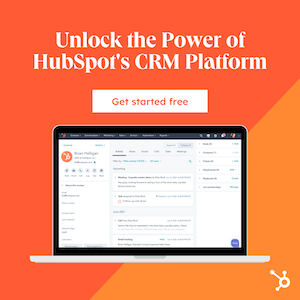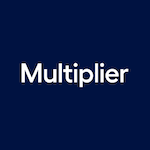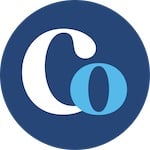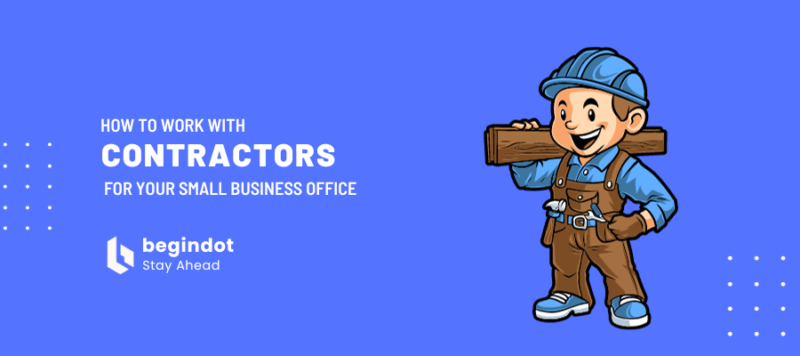The Best Book Website Templates for 2024
Book website templates are pre-designed web pages specifically for showcasing and selling books online. These templates cater to authors, publishers, and bookstores by providing a structured layout that includes features for book descriptions, author biographies, reviews, and online sales capabilities. They enable a quick and efficient way to build an attractive, functional website without the need for extensive web development skills.
In this article we will explore the best book website templates and how to utilize these templates to improve your book website.
Why Choose a Responsive Book Website Template?
One should choose a responsive book website template because it enhances user experience across various devices, improves SEO rankings, and simplifies the web design process, thereby increasing the visibility and sales of your book.
Firstly, it ensures that your website is accessible and visually appealing on any device, be it a desktop, tablet, or smartphone. This is crucial in today’s digital age, where people use various devices to access the internet.
Secondly, a responsive design improves user experience. It eliminates the need for unnecessary scrolling or resizing, allowing users to navigate your site easily and quickly. This can lead to increased reader engagement and, ultimately, higher sales for your book.
Thirdly, responsive design is beneficial for SEO. Search engines like Google prioritize mobile-friendly websites in their search results. Therefore, a responsive book website template can help improve your site’s ranking, making it easier for potential readers to discover your book.
Lastly, using a template can save you time and effort. You don’t need to build a website from scratch or have extensive knowledge of web design. Most templates come with built-in features and customization options, allowing you to create a professional-looking book website with ease.
What Makes a Template Truly Responsive?
A template is truly responsive when it has a fluid grid system, flexible images, CSS media queries, adaptive design, is tested across various devices, and possibly uses frameworks, ensuring optimal viewing and interaction experience across a wide range of devices.
Here’s a closer look at each of these factors:
- Fluid Grid System: This allows the layout to dynamically adapt and resize page elements based on the viewing device’s screen size.
- Flexible Images: Images that can scale and resize to fit different screen resolutions without distortion or loss of clarity.
- CSS Media Queries: These allow the webpage to gather data about the visiting device and apply different CSS styles depending on its characteristics, such as screen size and resolution.
- Adaptive Design: While similar to responsive design, adaptive design delivers multiple completely different versions of the same page depending on the screen size.
- Testing Across Devices: It’s important to test templates across various devices to validate their responsive behavior before customizing the design.
- Frameworks: Using frameworks like Bootstrap or Tailwind CSS can make implementing responsive sites simpler.
Benefits of Using Responsive Book Website Templates
The benefits of using responsive book website templates include enhanced user experience across various devices, improved SEO, increased website traffic, and reduced website maintenance.
Here’s more information on these benefits:
- Enhanced User Experience: Responsive templates ensure that your website is accessible and visually appealing on any device, be it a desktop, tablet, or smartphone. This eliminates the need for unnecessary scrolling or resizing, allowing users to navigate your site easily and quickly.
- Broader Audience Reach: With a responsive site template, you can increase your brand reach across all device. This is especially critical when a potential client asks to see your portfolio or when a colleague wants to recommend your work to a potential client.
- Improved SEO Performance: Search engines like Google prioritize mobile-friendly websites in their search results. Therefore, a responsive book website template can help improve your site’s ranking, making it easier for potential readers to discover your book.
- Cost-Efficiency: Using a template can save you time and effort. You don’t need to build a website from scratch or have extensive knowledge of web design. Most templates come with built-in features and customization options, allowing you to create a professional-looking book website with ease.
- Futureproof: Responsive designs are guaranteed to work well on any screen size, while adaptive designs only work on as many screens as its layouts are able to. Also, responsive designs load faster.
The Importance of Mobile-First Design in Ecommerce
Mobile-first design in ecommerce is becoming increasingly important due to a fundamental shift in consumer behavior towards mobile devices. Here are some key reasons why mobile-first design is crucial in ecommerce:
- Consumer Shifts: Mobile commerce sales hit $2.2 trillion in 2023, showcasing a major shift in consumer shopping habits toward mobile-first experiences. A 2023 Statista report revealed that m-commerce sales were attributed to 60% of global ecommerce sales.
- Enhanced Engagement: Mobile-first design boosts user satisfaction and engagement. An effective mobile-first design can also substantially improve a brand’s Customer Effort Score (CES).
- Preference for Mobile Apps: Consumers prefer mobile apps for ecommerce, leading to higher spending and stronger brand engagement1. A recent survey indicated that 60% of those polled preferred mobile apps over websites for convenience.
- Better Sales or Pricing: 84% of consumers would be willing to install and shop through a mobile app if it gave them access to better sales or pricing.
Increased Revenues: Going mobile-first increases revenues. For example, a company saw a remarkable 30% increase in user engagement within the first three months post-implementation of optimizing the user interface for smartphones and tablets. - Competitive Edge: Mobile-first design can give businesses an additional competitive edge.
- Customer Centric: The mobile-first philosophy is customer-centric. It ensures your site meets the expectations of your mobile users when it comes to speed, appearance, ease of navigation, and overall user experience.
- Prioritizing Content: Mobile-first design helps in prioritizing content. It considers smaller screens’ limits right from the start for a better mobile user experience.
In conclusion, with the rise of m-commerce, it’s essential for online retailers to prioritize mobile-first design and functionality to ensure a seamless customer experience. This approach means websites and apps are designed for the smallest screen first and then scaled up to larger screens, rather than the other way around.
Finding the Best Book Website Templates for WordPress
The best book website templates for WordPress can be found by considering highly-rated themes such as Scientia, Kalium, and Astra, which offer a range of functions and customization options suitable for book websites.
There are several highly-rated WordPress themes for book websites. Here are a few examples:
- Scientia: A modern WordPress template for libraries, book and media stores, authors, and education websites. It includes a large selection of functions, all of which are easily accessible even to rookie developers.
- Kalium: A spectacular WordPress theme for book lovers. It covers all the necessary equipment, ensuring a speedy and spectacular realization of a striking online bookstore.
- Astra: A lightweight, SEO-friendly, and responsive WordPress theme. Astra is extremely friendly for non-coders. The intuitive customization panel allows users to personalize any segment of their website.
Differences Between WordPress Themes and HTML Templates
WordPress Themes and HTML Templates are two different concepts used in web design, each with its own unique role and purpose.
A WordPress Theme is a complete design for a website. It controls the overall look and feel of your site, including elements like color selection, headers, footers, sidebar positioning, and typography. The theme operates through a CSS stylesheet, which controls these design elements.
When you install a theme through your WordPress admin area, the theme files are downloaded to your web server automatically. Themes can be found in the official WordPress theme directory or from a variety of WordPress theme designers.
On the other hand, an HTML Template is a pre-designed webpage that can be edited in any HTML editor. Unlike a WordPress theme, which is managed through the WordPress admin panel and stored in a single database, an HTML template is a standalone file that needs to be manually edited for each page.
In the context of WordPress, the term “template” has a specific meaning. A WordPress Template is a page layout that’s available within a theme. In other words, the template is just a single-page layout, not the whole site design. With WordPress, there’s no limit to the number of templates a theme can contain.
Some standard WordPress templates are common to almost all themes. Besides the standard templates, some themes have special templates designed to deliver special design features.
Top Rated Book Store WordPress Themes in 2024
Here are some of the top-rated book store WordPress themes in 2024:
- Astra: Astra is a free theme with a premium version starting from $39 per year. It is tightly integrated with WooCommerce and works well with all popular affiliate plugins.
- Angle: Angle is a clutter-free minimal design WordPress theme. It comes with a built-in portfolio module so authors can show off their work with style.
- Authority Pro: This is another highly-rated theme for bookstores.
Essentials of Ecommerce for an Online Book Store
Setting up an ecommerce for an online bookstore involves several key steps and features like site design, product photography, and security features. Here are some essentials for Book Store Ecommerce:
- Ecommerce Platform: Choose a reliable ecommerce platform that offers the business features you need to run a smooth operation. This could be a third-party marketplace like Amazon or Etsy, or an online store builder like Shopify.
- Brand and Site Design: Create a standout brand and site design that is appealing to your target audience.
- Product Photography: Use high-quality photos and videos to showcase your books.
- User Experience: Ensure a smooth user experience across devices1. This includes user-friendly navigation.
- Checkout Process: Make the checkout process as frictionless as possible1. This includes multiple payment options and prominent shopping cart and checkout buttons.
- Order Fulfillment: Ensure fast and reliable order fulfillment.
- Marketing Strategy: Develop a formidable ecommerce marketing strategy.
- Shipping and Return Information: Provide detailed shipping and return information.
- Security Features: Implement multiple security features to protect your customers’ information.
- Niche Audience: Cater to a niche audience (e.g., children, LGBTQ+, Black women) or focus on a niche genre (e.g., romance novels, Afrofuturism, nonfiction).
- Additional Products: Consider selling ebooks or audiobooks online as digital products, or starting a book-themed subscription box or bundle. You could also consider a book-adjacent business (e.g., book tote bags, library themed fragrances).
Integrating Ecommerce into Your Book Website
Integrating ecommerce into your book website involves understanding ecommerce integration, choosing the right ecommerce platform, setting up your product pages, implementing a secure checkout process, marketing your books through ecommerce, streamlining fulfillment and customer service, and analyzing and optimizing your ecommerce strategy.
Here are some steps to guide you through the process:
- Understanding E-commerce Integration: E-commerce integration involves incorporating a shopping cart, product pages, and a secure checkout process into your author website. This allows you to sell your books directly to readers without the intermediary of third-party retailers.
- Choosing the Right E-commerce Platform: Select an e-commerce platform that is user-friendly, customizable to fit your brand, and scalable as your sales grow. Popular options include WooCommerce for WordPress sites, Shopify, and SquareSpace Commerce.
- Setting Up Your Product Pages: Create product pages for each of your books. Include high-quality images, detailed descriptions, and pricing information.
- Implementing a Secure Checkout Process: Ensure your checkout process is secure and user-friendly. This might involve integrating with a payment gateway, setting up shipping options, and implementing a system for order confirmation emails.
- Marketing Your Books Through E-commerce: Use your website and social media platforms to promote your books. This could involve sharing excerpts, hosting virtual book launches, or offering special promotions.
- Streamlining Fulfillment and Customer Service: Develop a system for fulfilling orders and handling customer service inquiries. This could involve partnering with a fulfillment center or setting up an automated system for tracking orders.
- Analyzing and Optimizing Your E-commerce Strategy: Regularly review your sales data and customer feedback to identify areas for improvement. This could involve tweaking your marketing strategy, improving your website design, or expanding your product range.
Maximizing Sales Through Effective Layout and Design
Maximizing sales through effective layout and design involves strategically positioning products, creating effective product groupings, simplifying the checkout process, considering the flow of customer traffic, and strategically positioning key product displays.
It also includes implementing strategies such as clear product descriptions, high-quality images, user reviews, compelling CTAs, mobile-friendly design, detailed specifications, trust signals, and a streamlined checkout process.
Furthermore, it’s essential to pay attention to lighting when designing layouts; appropriate lighting can make all the difference between an inviting atmosphere versus one that feels uninviting.
Lastly, retailers should contemplate the manner in which they wish to guide customers as they traverse their shop while shopping.
Design Tips for Crafting the Perfect Book Store Website
Designing a perfect bookstore website involves a combination of aesthetics, functionality, and user experience. Here are some tips:
- Visual Appeal: The design should be visually appealing to attract and retain visitors. Use high-quality images of book covers, author photos, and other related graphics.
- Easy Navigation: The website should have a clear and easy-to-use navigation system. This could include a menu bar with categories, a search function, and filters for different book genres.
- Author Information: Include information about the authors. This could be a short biography, list of their works, or even a personal message to the readers.
- Book Details: Each book should have a dedicated page with details such as the synopsis, author information, reviews, and a sample chapter.
- Call to Action (CTA): Prominent CTAs like “Buy Now” or “Add to Cart” buttons should be included on the book pages.
- Mobile Responsiveness: The website should be responsive and optimized for mobile devices. This ensures a good user experience regardless of the device used to access the website.
- SEO Optimization: Use SEO best practices to improve the website’s visibility on search engines.
- Social Media Integration: Include links to social media profiles and encourage users to share books or content on their social networks.
- Contact Information: Provide clear contact information and make it easy for visitors to get in touch for inquiries or support.
- User Reviews: Allow users to leave reviews for the books they’ve read. This can help other visitors make informed decisions.
Key Features to Look for in Book Website Templates
The key features to look for in book website templates include responsive design, customizability, SEO-friendliness, fast loading times, e-commerce integration, social media integration, and user-friendly navigation. Here’s a closer look at each of these features:
- Responsive Design: The template should be mobile-friendly and adapt to different screen sizes. This ensures that your website looks great on all devices.
- Customizability: Look for templates that allow you to easily customize the design elements such as colors, fonts, and layouts to match your brand.
- SEO-Friendly: The template should be built with SEO in mind to help your website rank higher in search engine results.
- Fast Loading: A good template should be optimized for speed to provide a smooth user experience.
- E-commerce Integration: If you plan to sell your books directly from your website, the template should support e-commerce platforms.
- Social Media Integration: The template should allow you to easily integrate your social media accounts to promote your books.
- User-Friendly Navigation: The template should have a clear and intuitive navigation structure to make it easy for visitors to find what they’re looking for.
Best Books Website Templates in 2024
For the best books website templates in 2024, there are several outstanding options tailored for various needs, whether you’re setting up an online bookstore, a personal author website, or a book review blog. Here are some top choices:
EvoBook
This is a versatile and modern book website template that provides over 20 different pages and multiple homepage designs, along with e-commerce features perfect for an interactive book store or an author’s website.
Bookland
A Bootstrap 5 HTML template ideal for online bookstores, featuring e-commerce functionality, interactive search, and filtering options to enhance user experience.
Odrin
Suitable for book reviews and book selling, this template uses the Unyson framework for ease of customization. It offers unique book preview options and is designed to provide an authentic user experience.
Bookie
A pleasingly ingenious bookstore website template with rounded edge web elements and stylish fonts, it’s loaded with the WPBakery page builder tool for easy customization.
Pustok
A sophisticated Books Store HTML Template designed for e-commerce sites catering to books, stationery, and more. It offers over 40+ HTML pages and features such as mega menus and different product view types, providing flexibility and a polished online presence.
Best Book Website Templates for Publishers and Authors
Litera
A template designed specifically for authors and literary publishers. It features a clean, modern design with sections for showcasing new releases, author bios, and upcoming events. It’s responsive and easy to customize.
Bookish
Ideal for authors looking to sell directly to readers, this template offers integrated eCommerce capabilities, a blog section for sharing writing tips, and an events calendar for book signings and releases.
Publisher
This template is great for publishing houses. It includes areas for showcasing a catalog of books, detailed author pages, and the latest publishing news. Its professional layout is designed to highlight featured authors and bestsellers.
Best Book Website Templates for Book Promotions, eBook Sales and Book Reviews
Readers Delight
Tailored for book promotions and eBook sales, this template features large, eye-catching book cover images, user reviews, and links to purchase books directly. It includes special sections for bestsellers and new releases.
Ebookie
Designed for eBook sales, Ebookie includes built-in functionality for a smooth digital download process. It also has sections for author interviews, book summaries, and reader testimonials to boost credibility.
Libro
An excellent choice for sites focusing on book reviews, Libro offers a structured format for posting detailed reviews, rating systems, and an interactive comment section. It also integrates social media sharing tools to increase engagement.
Best Free Book Website Templates
Wonted
A single-page template designed for book authors and those seeking to promote their books to a wide audience. Created using modern technologies including React, React-Router-Dom, React-Bootstrap, and SASS, this template offers a fully responsive design for various devices.
Bookland
A contemporary E-commerce Bootstrap 5 HTML Template tailored for online bookstores. It offers a visually engaging design, responsive layout, and e-commerce functionality.
Bookhunt
A visually appealing one-page template designed for landing pages, and it is responsive with HTML5 Bootstrap React integration.









